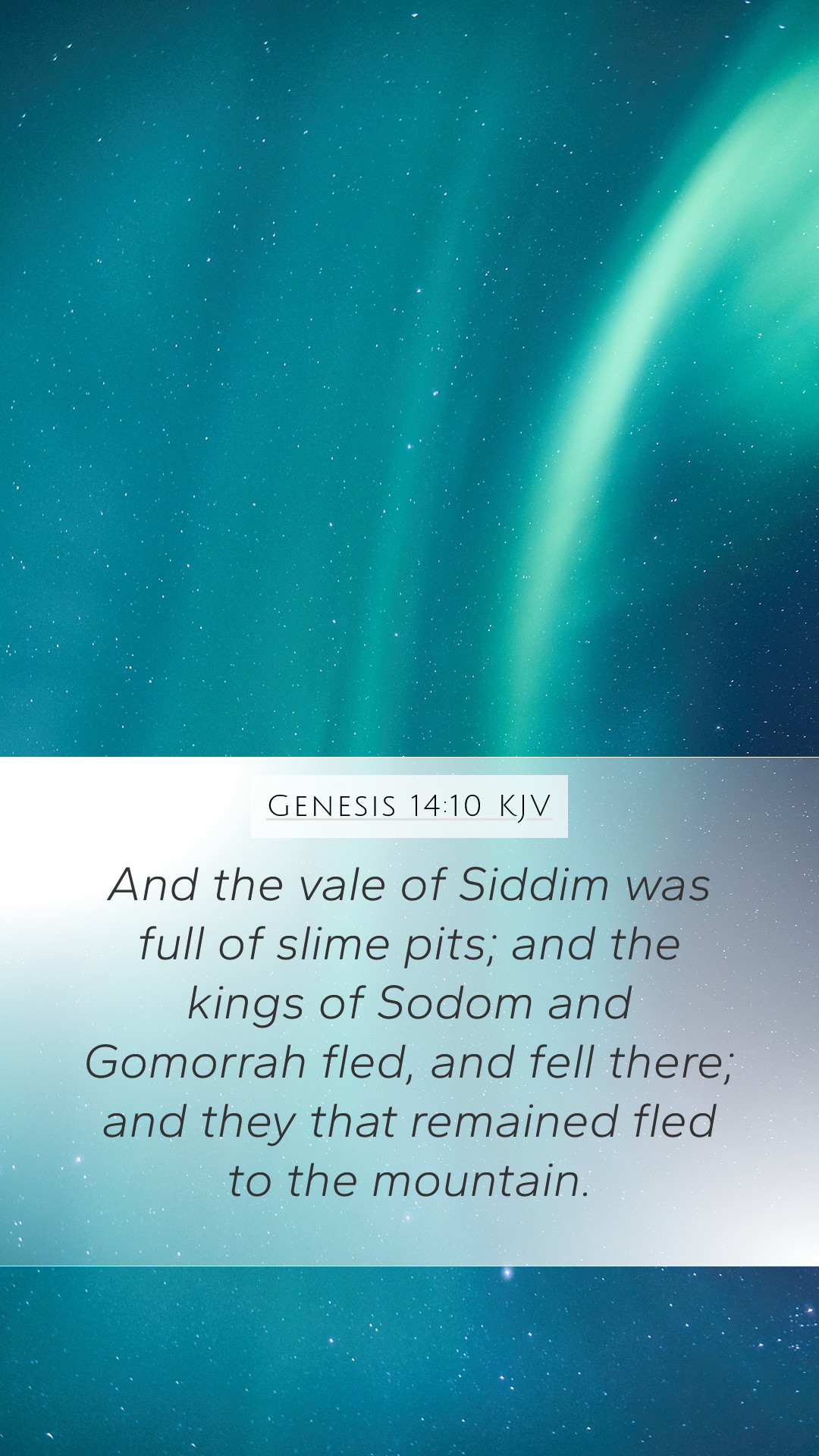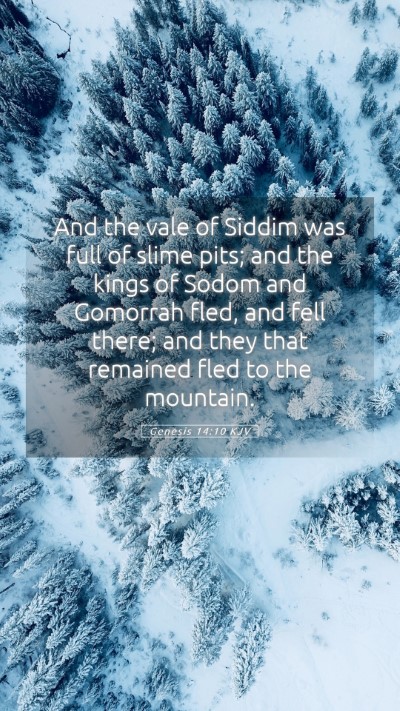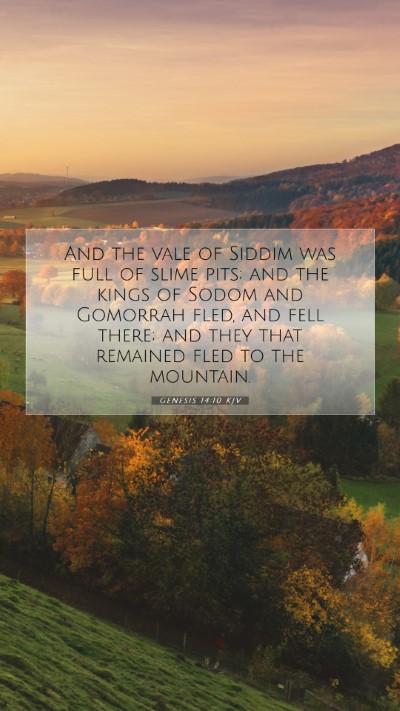Understanding Genesis 14:10 - Bible Verse Analysis
Genesis 14:10 states, "Now the valley of Siddim was full of slime pits; and the kings of Sodom and Gomorrah fled, and fell there; and they that remained fled to the mountain." This verse is rich in historical and theological context, offering a glimpse into the times of conflict, loyalty, and divine providence. Below, we explore the interpretations and explanations from various esteemed commentaries to provide a thorough understanding of this scripture.
Verse Context and Historical Significance
The context of this verse lies in the larger narrative of the war involving several kings and the subsequent interactions with Abram (later named Abraham). The verse points to the defeat of the kings of Sodom and Gomorrah, significant cities later known for their wickedness. According to Matthew Henry, the 'valley of Siddim' represents not only a geographical location but also a symbolic site of judgment and calamity.
Key Themes from Commentaries
- Matthew Henry: Highlights the moral implications of the events, suggesting that the slime pits symbolize the dangers of base earthly pursuits and temptations that led to the downfall of these cities.
- Albert Barnes: Focuses on the historical narrative of conflict among kings, emphasizing the military and political dynamics at play during this ancient period.
- Adam Clarke: Discusses the physical geography of the region, explaining that the slippery nature of the slime pits contributed to the downfall of those attempting to flee.
The Meaning of the Slime Pits
The 'slime pits' hold significant meaning in biblical verse interpretations. They are often seen as a metaphor for the worldly pleasures and the pitfalls that ensnare those who seek power and wealth, leading to their eventual destruction. This imagery aligns with the concept of moral decay prevalent in Sodom and Gomorrah, as noted by both Matthew Henry and Albert Barnes.
Implications for Biblical Exegesis
- Hebrew words used: The original Hebrew connotations of "slime" point towards corruption and decay.
- Theological reflection: The perilous conditions faced by the kings symbolize the inevitable consequences of rejecting God's moral guidance.
Application to Daily Life
Many Bible study groups today explore how the lessons of Genesis 14:10 can be applied in contemporary life. Understanding the moral consequences of choices and recognizing spiritual pitfalls are crucial in guiding believers toward a path of righteousness. One might reflect on how seeking ephemeral gains can lead to spiritual dangers, just as the kings faced disaster due to their pursuits.
SEO Keywords Integration
This analysis serves as a valuable Bible study resource for anyone looking to deepen their Bible verse understanding and Bible verse meanings. As we engage in in-depth Bible verse analysis, we can glean insights applicable to our life experiences.
Cross References
- Genesis 19:24-25: The destruction of Sodom and Gomorrah as a direct consequence of their wickedness.
- Isaiah 1:9: A similar theme of judgment against cities and their moral decay.
- 2 Peter 2:6: Reflects on the destruction of the ungodly and the lessons learned from their downfall.
Conclusion
Genesis 14:10 is not merely a historical account but also a profound lesson in moral living and awareness of spiritual pitfalls. Through the lens of biblical commentary and exegesis, we can derive Bible study insights that speak to both our historical understanding and personal reflections today. Such passages remind us of the need to remain vigilant and grounded in our faith to avoid the 'slime pits' that can exist in our own lives.


